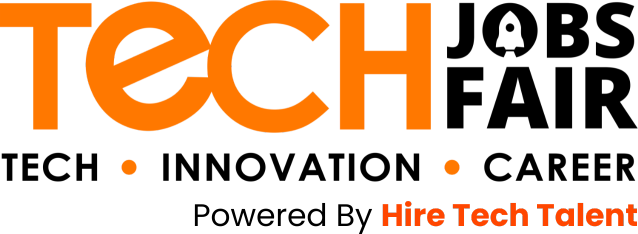- « Previous blog
-
December 23, 2022
-
2081
- Next blog »
Step into the world of Diversity and Inclusion in the workplace as we go on a revolutionary journey together. Organisations must embrace the richness of variety and create an environment that embraces and values differences in today’s ever-changing world. Businesses can tap into diverse ideas, experiences, and abilities by fostering an inclusive culture, leading to enhanced innovation, employee satisfaction, and, ultimately, organisational success. Read the blog as we look at practical solutions, illustrating case studies and concrete ideas for promoting diversity and inclusion in the workplace, empowering people and accelerating collective progress.
Importance of diversity and inclusion in the workplace
The importance of workplace diversity and inclusion cannot be emphasised. Organisations must recognise the need to build an inclusive work environment that embraces diversity in today’s globalised and linked society. Here are some of the main reasons why diversity and inclusion are critical:
-
Enhanced Problem-Solving and Innovation
A diverse workforce brings together people from various backgrounds, opinions, and experiences. This diversity of thought leads to more creative problem-solving and a wider choice of solutions.
-
Productivity and performance gains
Employees feel valued and respected for their unique contributions in inclusive environments, which foster a sense of belonging and psychological safety. A favourable work environment increases employee engagement, job happiness, and overall productivity.
-
Customer Satisfaction and Market Reach
Organisations embracing diversity can better understand and engage with a diverse consumer base. Companies can obtain insights into different market segments, customise their products or services accordingly, and improve customer satisfaction by having a workforce matching their target consumers’ demographics.
-
Top Talent Attraction and Retention
Inclusive workplaces are competitive in attracting and maintaining brilliant individuals from varied backgrounds. Prospective employees frequently seek out organisations that encourage diversity and inclusion, recognising the importance of working in an environment where they can be themselves, feel included, and have equal opportunity for progress.
-
Ethical Imperative and Social Responsibility
Diversity and inclusion are not only a corporate requirement but also a moral and ethical obligation. Organisations that cultivate an inclusive workplace help to tear down societal barriers, combat prejudice, and promote equality.
Benefits of Diversity and Inclusion in the Workplace
-
Increased Creativity and Innovation
Inclusive workplaces bring together people from all backgrounds, experiences, and opinions. As multiple perspectives and ideas merge to offer creative answers to challenging challenges, this diversity of thought stimulates innovation.
-
Improved Decision-Making
Decision-making becomes more robust and successful when teams are diverse and inclusive. Multiple views and approaches aid in the identification of blind spots, the testing of assumptions, and the consideration of a broader range of options.
-
Improved Problem-Solving Capabilities
Inclusive environments promote open communication and constructive dispute resolution. When people from different backgrounds join, they each bring their own problem-solving skills and techniques. This variety of problem-solving strategies allows teams to approach problems from many perspectives, resulting in more thorough and effective solutions.
-
A larger talent pool and a competitive advantage in recruiting
Diverse and inclusive organisations attract a broader range of talent. Companies that are known for cultivating an inclusive culture are more enticing to people from varied backgrounds. This broadens the talent pool and gives organisations access to a wide set of talents, experiences, and perspectives.
-
Stronger Brand Image and Reputation
Diversity and inclusion-focused organisations are seen as progressive, socially responsible, and forward-thinking. This favourable reputation can attract customers, clients, and business partners who share the principles of the organisation. It can also help to improve interactions with stakeholders and contribute to the overall image and reputation of the business.

How to Create an Inclusive Culture
-
Commitment to Leadership
Leadership plays an essential role in establishing the tone for inclusivity. Leaders must demonstrate a strong commitment to diversity and inclusion via their words and actions. They should actively champion and support inclusive initiatives and ensure that diversity and inclusion are integrated into the organisation’s core values and strategic goals.
-
Implement Inclusive Policies and Practises
Examine current policies and practices to identify areas where inclusion might be enhanced. Ensure that policies are fair and equitable and that equal opportunities are provided to all employees. Create rules to prohibit discrimination and harassment and methods for reporting and dealing with such events. Consider adopting flexible work arrangements and accommodations to accommodate employees with varying demands.
-
Encourage active listening and open communication
Encourage open and polite dialogue among all levels of the organisation. Create outlets for employees to express their thoughts, concerns, and ideas without fear of retaliation. Actively listen to varied opinions and experiences, recognising all employees’ contributions. Seek feedback from employees regularly and incorporate their suggestions into decision-making processes.
-
Build Trust and Psychological Safety
Create a trusting and psychologically safe workplace where employees can freely share their opinions, ideas, and concerns. Create a culture of respect, understanding, and support in which people can be themselves without fear of being judged or excluded. Encourage collaboration and teamwork by recognising and appreciating all team members’ contributions.
-
Training on Diversity and Inclusion
Provide training programmes to increase understanding of diversity, inclusiveness, unconscious prejudice, and cultural competence. These programmes can assist employees in understanding the importance of diversity and developing the skills necessary to perform effectively in a varied environment. Topics such as cultural awareness, empathy, active listening, and inclusive communication should be included.
-
Continuous Learning and Improvement
Create systems for tracking progress and assessing the efficacy of diversity and inclusion programmes. Evaluate and assess the impact of policies, practises, and programmes regularly. Utilise comments and data to discover areas for improvement and make necessary changes. Learn from best practices, industry trends, and evolving research on diversity and inclusion continuously.
Real-World Examples of Diversity and Inclusion in the Workplace
Microsoft
Microsoft has been recognised for its efforts to encourage workplace diversity and inclusion. To encourage LGBTQ+ employees, the corporation established a LEAP programme (Leading, Empowering, and Accelerating Pride). They also developed the Autism Hiring Programme to expand employment options for people on the autism spectrum. Microsoft actively monitors diversity data, establishes objectives, and holds leaders accountable for progress.
Salesforce
Salesforce is committed to fostering an inclusive workplace and has developed a number of initiatives to promote diversity. Employee resource groups (ERGs) such as Outforce (LGBTQ+), Boldforce (Black employees), and Latinoforce (Latinx employees) were formed to support marginalised communities. Salesforce also does regular pay equity reviews and remedies any discovered inequalities.
IBM
IBM has a strong history of diversity and inclusion. The corporation sponsored a number of initiatives, including the “P-TECH” education initiative, which gives impoverished youngsters access to STEM education and job paths. IBM also launched the “Reinventing Education” programme to provide equitable educational opportunities for kids worldwide.
Conclusion
Finally, in today’s dynamic and interconnected world, supporting diversity and inclusion in the workplace is a moral necessity and a strategic advantage for organisations. Organisations can unlock the full potential of their workforce, promote innovation, improve decision-making, and boost employee engagement and performance by embracing diversity and building an inclusive culture. Organisations may establish an environment where individuals from all backgrounds feel appreciated, respected, and empowered to contribute their unique ideas and talents by committing to inclusive policies, open communication, and continual learning. Organisations can demonstrate true diversity and inclusion via collaborative efforts and a commitment to continuous improvement, resulting in a workplace where everyone can thrive and contribute to collective success. Let us embark on this journey of embracing diversity and inclusion and, together, build a future of workplaces that celebrate the richness of differences and promote collective growth.
Join 20,000+ Subscribers
Get exclusive access to new tips, articles, guides, updates, and more.


